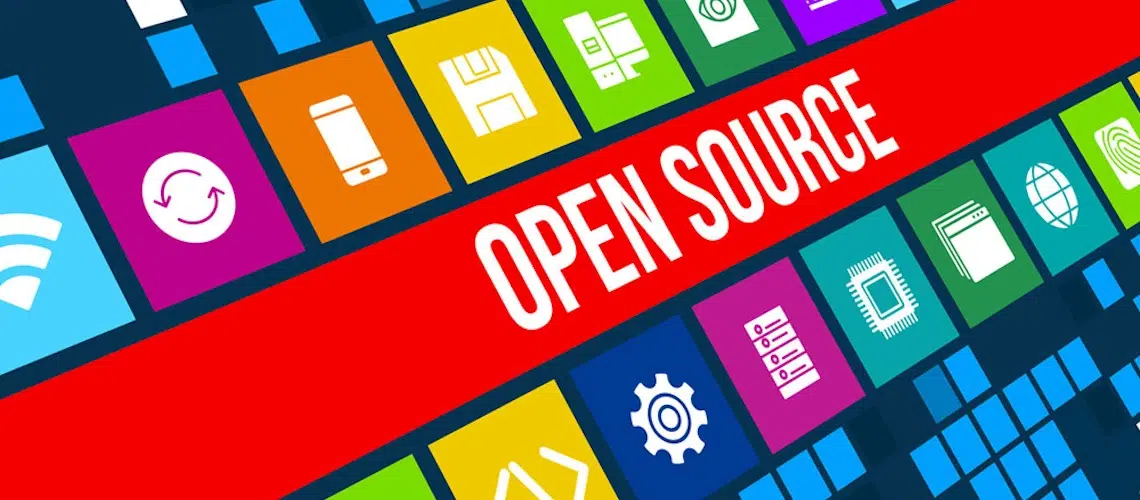Top 21 Open-Source Software Consultants
OS offers flexibility and transparency, while commercial software provides controlled features and support. Consultants help businesses navigate it, ensuring smart adoption, integration, and compliance. ↓

This list showcases the world’s best open-source consultants, highlighting their specializations, key projects or clients, and why they stand out in the open source ecosystem.
- Andrew Aitken
- Gilles Gravier
- Jono Bacon
- Tobie Langel
- Karl Fogel
- Allison Randal
- Simon Phipps
- Bruce Perens
- Danese Cooper
- Sumana Harihareswara
- Martin Michlmayr
- Van Lindberg
- Jerome Petazzoni
- Kelsey Hightower
- Patrick Debois
- VM (Vicky) Brasseur
- Carlo Piana
- Shane Coughlan
- Guy Martin
- Luis Villa
- Bradley M. Kuhn
These consultants span various domains – from open-source strategy and community building to legal licensing, cloud and DevOps, and more – reflecting the diverse expertise.
Andrew Aitken

Hedera Open Source Initiatives with Andrew Aitken & Ken Anderson.
Andrew is a veteran open-source strategist known for launching the industry’s first open source consulting firm.
Based in the U.S., he serves as Global Open Source Practice Leader at Wipro. Aitken has over two decades of experience advising top enterprises and governments on open-source adoption and governance. He has guided organizations like the White House CIO’s office, Microsoft, and IBM on their open-source strategies, cementing his reputation as a go-to expert for high-level open-source initiatives.
Gilles Gravier
Gilles is a Switzerland-based open-source and InnerSource strategy consultant with over 25 years of experience.
Formerly a director in Wipro’s Open Source Consulting practice, he now offers independent consulting services to global clients. Gravier advises Fortune 500 companies, startups, and venture capital firms on open-source adoption, licensing, and innovation strategy. He previously served as Chief Technology Strategist for Security and Open Source at Sun Microsystems, helping major clients with open-source and security strategy.
His breadth of expertise ranges from open-source software and InnerSource (applying open-source methods internally) to blockchain and emerging tech.
Jono Bacon

Photo: Open Source Summit NA
Jono is a leading consultant in open-source community management and strategy, helping companies build and grow developer communities.
Based in the US/UK, he has 20+ years’ experience and has worked with over 200 organizations on community strategy. Bacon’s client list includes technology giants and enterprises such as Huawei, GitLab, Microsoft, Google, Intel, Sony Mobile, Deutsche Bank, Santander, Mozilla, and SAP – a testament to his broad impact across industries. He is the author of People Powered, a book on building communities, and previously led community efforts for Ubuntu at Canonical. Bacon is known for translating business goals into effective open-source community engagement.
Tobie Langel
Tobie is a globally recognized open-source strategy consultant based in Geneva, Switzerland.
As founder of UnlockOpen, a boutique consulting firm, he helps organizations build mutually beneficial relationships with open-source communities. Langel advises some of the biggest names in tech – including Google, Microsoft, Mozilla, Intel, and Cisco – as well as startups like Airtable and Coil, and industry groups like the OpenJS Foundation and W3C. A former Facebook Open Source and web standards leader, he brings deep insight into how open source, standards, and industry collaboration intersect.
Langel is also known for his work on web standards and as a co-maintainer of the Prototype.js framework.
Karl Fogel
I really think that in the early 2000s, 2005-2006 the time was ripe for some kind of long-form guide to the social and community management aspects of open source to come out, and my book just happened to come out.
Karl is a prominent open-source development specialist with a career spanning 30 years.
Based in the US, he is a partner at Open Tech Strategies (OTS), a consultancy he co-founded to help organizations adopt open-source collaboration models. Fogel is famous for authoring Producing Open Source Software, the seminal book on managing OSS projects. He has served as an open-source strategist at Google, Canonical (where he helped open-source Launchpad), O’Reilly Media, and Code for America.
Through OTS, Karl has advised major companies and governments – OTS’s clients include industry leaders like Microsoft, Pearson, SAP, and Northrop Grumman, as well as public sector agencies.
Allison Randal

Photo: O’Reilly Media
Allison is a highly respected open-source strategist, architect, and developer with over 30 years in the field.
Based in the UK/US, she has held leadership roles at organizations like the Open Source Initiative (OSI President), the Perl Foundation (President), Canonical (Technical Architect of Ubuntu), Hewlett-Packard Enterprise (Distinguished Technologist for Open Source) and SUSE (Distinguished Engineer). Randal co-founded the FLOSS Foundations group to support open-source leaders and has served on numerous boards (Software Freedom Conservancy, Open Infrastructure Foundation, etc.).
A coder at heart, she has contributed to projects from Perl and Parrot VM to OpenStack and Debian.
Simon Phipps
Simon is a UK-based open-source advocate and consultant with a rich history as an open-source executive.
He was Sun Microsystems’ Chief Open Source Officer in the 2000s, where he led the open-sourcing of Java and Solaris among other projects. Phipps is a former President of the Open Source Initiative (2012–2015) and has served on numerous boards (Open Rights Group, Document Foundation, AlmaLinux Foundation). With over 35 years in the tech industry, he provides insight and advisory services on open-source licensing, governance, and community to businesses and governments.
Simon is widely recognized as a leading authority on open source software and digital rights, as well as an engaging speaker and writer.
Bruce Perens
Bruce is one of the original figures of the open-source movement, best known for co-founding the Open Source Initiative and authoring the Open Source Definition in 1998.
Based in California, Perens today works as an open-source strategic consultant and expert witness, advising law firms, corporations, and government agencies on open-source and open hardware issues. He has consulted for high-profile clients including Merrill Lynch, Motorola, and the NYC government. With a background in both tech and the film industry (previously at Pixar), Perens brings a unique perspective on how open-source principles can drive innovation.
He represented the open-source community at the United Nations’ WSIS summit and has authored numerous books and articles on open software.
Danese Cooper
Danese is a renowned open-source evangelist often nicknamed “The Open Source Diva” for her trailblazing work in corporate open source.
An American technologist, she was Sun Microsystems’ first Chief Open Source Evangelist, where her 6-year tenure saw Sun open-sourcing key software (OpenOffice.org, Java, etc.) and embracing community development. Cooper later led open-source initiatives at Intel (Sr. Director of Open Source Strategy) and served as CTO of the Wikimedia Foundation. In 2011, she founded her consulting company, daneseWorks, whose first client was the education nonprofit inBloom, and advised AI company Numenta on open-source strategy. Danese has also chaired InnerSource Commons, promoting open-source methods within organizations.
With over two decades of advocacy, she has helped countless firms transition to open source and championed diversity and inclusion in tech.
Sumana Harihareswara

Photo: GitHub Next
Sumana is an expert in open-source project management and community coordination, specializing in improving the sustainability of software maintainers and projects.
Based in New York City, she is the founder of Changeset Consulting, a firm providing project management services to open-source teams. Sumana has 15+ years in the industry and has worked with major open-source organizations: she led the Python Software Foundation’s communications for the Python 2 sunset, managed improvements for PyPI (Warehouse) packaging infrastructure, and coordinated community strategy for the Wikimedia Foundation and GNOME in prior roles. Her client list ranges from the Electronic Frontier Foundation (where she helped the HTTPS Everywhere project onboard new maintainers) to companies like Tidelift (advising on maintainer outreach).
Sumana’s emphasis on mentorship, communication, and workflow fixes helps volunteer-driven projects thrive.
Martin Michlmayr
Martin is a free and open-source software advocate and consultant with deep expertise in community governance and open-source foundations.
Based in Europe, he operates as a freelance consultant advising organizations on setting up open-source projects, foundations, and effective maintainer workflows. Michlmayr is a former Debian Project Leader (served two terms), giving him firsthand experience managing one of the world’s largest volunteer OSS communities. He later worked at HP’s Open Source Program Office and as an OSPO lead in industry. Martin has advised major open-source foundation boards (he served 6 years on the OSI Board and ~5 years on Software in the Public Interest). He was also recognized with an O’Reilly Open Source Award in 2013 for his contributions.
Michlmayr’s consulting focuses on helping organizations adopt open-source best practices, from licensing and governance policies to release management.
Van Lindberg
Van is a prominent attorney and software developer who specializes in the intersection of open source and intellectual property law.
With over 25 years focused on open-source law and strategy, he has guided numerous companies through the complexities of open-source licensing, patent issues, and community engagement. Lindberg is the author of the O’Reilly book “Intellectual Property and Open Source”, making legal concepts accessible to engineers. He has served as VP of Legal at the Python Software Foundation and on the board of the Open Source Initiative. Van’s career includes helping clients (from startups to large enterprises) understand how to contribute to and leverage open-source communities while protecting their IP interests.
Formerly a senior attorney at DLA Piper and now counsel at Taylor English, he remains one of the go-to experts for crafting open-source licensing strategy.
Jerome Petazzoni

Photo: Traefik Labs
Jérôme is a well-known consultant and educator in the cloud native and DevOps arena, specializing in Linux containers and Kubernetes.
A former senior engineer at Docker, Inc., Jérôme was part of the team that built and scaled the pioneering dotCloud PaaS before it became Docker. Over 7+ years at Docker, he helped architect the container infrastructure and trained thousands of engineers on Docker and Kubernetes usage. Now an independent consultant (through Tiny Shell Script LLC), Petazzoni offers training and consulting services worldwide on containerization, orchestration, and cloud deployment practices. He’s known for his hands-on workshops and for maintaining popular Docker training resources.
As a Docker “Captain”, Jérôme also contributes tutorials and open-source tools for the community.
Kelsey Hightower
Kelsey is a prominent figure in the cloud computing and open-source communities, known for his work in making complex infrastructure accessible.
Based in the US, Hightower was a Google Cloud engineer and advocate, co-authoring “Kubernetes: Up and Running” and helping countless engineers adopt Kubernetes and modern DevOps practices. After “wearing every hat possible” in tech – from support to developer advocate – Kelsey has taken on advisory roles and independent consulting. He serves as an advisor to companies like Civo (a cloud provider), guiding their product strategy for Kubernetes and cloud appliances. Hightower is an outspoken open-source advocate who focuses on simplicity and education; he frequently keynotes industry conferences (including multiple KubeCons) and is revered for live-coding demos.
Though semi-retired from corporate life, he continues to influence the cloud-native landscape through mentorship and thought leadership.
Patrick Debois
Patrick is internationally recognized as the “father of DevOps”.
Based in Belgium, he coined the term “DevOps” in 2009 after organizing the first DevOpsDays conference. Debois’s background spans development, QA, and system administration, which led him to champion better collaboration between Dev and Ops – a concept rooted in open source tooling and culture. Today, Patrick works as an independent consultant at the intersection of DevOps and emerging tech like generative AI. He guides companies (from startups to enterprises) on DevOps transformations and more recently on applying AI to automation workflows.
Debois has served as an advisor or engineering leader with organizations such as Atlassian and Snyk, and co-authored The DevOps Handbook. His ability to bridge management and engineering has made him a trusted ally to many teams.
VM (Vicky) Brasseur
Vicky is a respected open-source strategist and author based in Oregon, USA.
She specializes in helping companies leverage open source for business success. With over 20 years in tech leadership, including as director of software engineering, Brasseur has led open-source strategy for corporations and non-profits alike. She advises firms on how to contribute to and release open source projects effectively, and how to participate in open communities to meet business goals. Vicky is an Open Source Initiative board member (former VP) and has written two books: Forge Your Future with Open Source (a guide for newcomers to OSS) and Business Success with Open Source (for companies integrating OSS).
Her consultancy work often involves crafting open-source contribution policies, setting up inner-source programs, and training teams on open-source culture.
Carlo Piana
Carlo is a prominent IT lawyer based in Milan, Italy, with over 25 years of experience in digital rights and open-source advocacy.
He has been at the forefront of major legal battles for open source in Europe – most notably, Carlo represented the Free Software Foundation Europe (FSFE) and the Samba Team in the landmark EU antitrust case against Microsoft, which secured interoperability information for open-source workgroup servers. Piana’s practice focuses exclusively on tech law, especially open source: he regularly advises important free software projects and foundations (Debian, The Document Foundation, Blender Foundation, etc.) on legal and licensing issues. He served as General Counsel of FSFE for over a decade and is the current Chair of the Board at the Open Source Initiative.
Carlo also co-founded the International Free and Open Source Software Law Review. He is revered as an eminent figure in open-source law and a fierce opponent of software patents in the EU.
Shane Coughlan
Shane is an open-source compliance and supply chain expert, known for building bridges between legal, security, and business domains in open tech.
Originally from Ireland, now in Japan, he is the General Manager of the OpenChain project at the Linux Foundation, which defines industry standards for open-source compliance. Shane’s professional accomplishments include “spearheading the licensing team that elevated Open Invention Network into the largest patent non-aggression community in history,” as well as establishing the leading professional network of open-source legal experts. He has extensive knowledge of open-source governance, having advised companies in sectors from automotive to mobile on how to develop internal OSS policies and manage their open-source usage. Coughlan also launched the first law journal and book dedicated to open-source legal issues.
With a background in communications and business development, he excels at aligning diverse stakeholders to improve open-source compliance and security practices.
Guy Martin

Photo: All Things Open
Guy is an open-source program office (OSPO) expert with a career of building and running open-source and standards initiatives inside large organizations.
Based in Oregon, USA, he has over 25 years’ experience as a software engineer and strategist. Guy most recently served as Director of Open Source & Standards at NVIDIA (and previously Executive Director of OASIS Open), reflecting his dual expertise in open-source and open standards. He has built open-source programs at companies like Red Hat, Samsung, and Autodesk. Notably, while leading Autodesk’s OSPO, he co-founded the Academy Software Foundation in partnership with the Linux Foundation to drive open-source in Hollywood. At Samsung, he was a founding team member of the Open Connectivity Foundation, aligning IoT standards with open-source reference implementations.
Martin’s consulting insight is sought by companies looking to start or improve their OSPO, integrate open standards with open source, or foster cross-company collaboration.
Luis Villa
Luis Villa is a seasoned open-source attorney and community strategist, currently co-founder and General Counsel of Tidelift (recently acquired by SonarSource).
Based in SF, Luis has a rich background: he was Deputy General Counsel at the Wikimedia, an attorney at Mozilla where he led the revision of the Mozilla Public License 2.0, and an OSI Board member (chairing its License Committee). He’s also a coder by hobby – having maintained an open-source OS for Lego robots in his youth. At Tidelift, he helped create a business model to pay open-source maintainers, showcasing his commitment to sustainability in OSS. Luis advises companies on compliance and “lawyer/community” relations, ensuring legal policies serve open-source communities.
With experience spanning large open-source projects (GNOME, Wikimedia) and corporate law, he provides a balanced perspective on open-source usage and contributions.
Bradley M. Kuhn
Bradley is a renowned free software activist and consultant who has dedicated his career to defending software freedom.
Based in the United States, Kuhn is the Policy Fellow and Hacker-in-Residence at the Software Freedom Conservancy (SFC), where he formerly served as Executive Director. He was also Executive Director of the Free Software Foundation (2001–2005). Bradley is best known for his efforts in GPL enforcement — he has led or supported many high-profile GPL compliance cases and pioneered community-friendly approaches to enforcement. He also created the FSF’s well-known list of free software licenses and was the original author of the Affero GPL (AGPL). Through SFC (which he co-founded), Bradley provides pro bono guidance to many open-source projects on legal and organizational issues. He frequently works as a consultant or expert witness on compliance matters for companies aiming to honor copyleft licenses.
Kuhn’s knowledge of licenses, combined with his strong ethical stance, makes him a key advisor for any organization aiming to do open source right.
Wrap Up
These legends represent exceptional talent, making them extremely challenging to headhunt. However, there are thousands of other highly skilled OS professionals available to hire with our help. Contact us, and we will be happy to discuss your hiring needs.
Note: We’ve dedicated significant time and effort to creating and verifying this curated list of top talent. However, if you believe a correction or addition is needed, feel free to reach out. We’ll gladly review and update the page.





